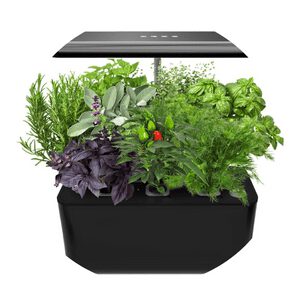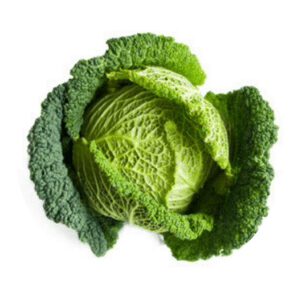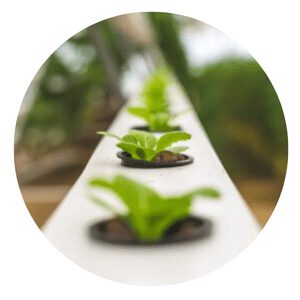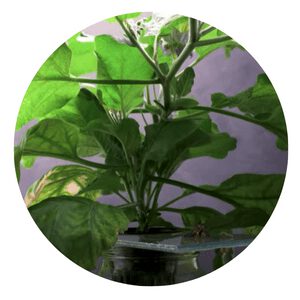How To Grow Cabbage Hydroponically
Cabbage is a nutritious leafy green vegetable that people can easily grow hydroponically.
Growing cabbage hydroponically is a process of growing plants in a water-based, nutrient-rich solution instead of soil.
This method is often considered ideal for growing leafy greens because it allows for better control over the plant’s environment and nutrition.
Plus, it is generally easier to prevent pests and diseases when growing hydroponically.
Hydroponic Cabbage Menu
What is cabbage, how does it grow
Cabbage is a leafy vegetable that belongs to the brassica family. It is closely related to broccoli, cauliflower, and Brussels sprouts.
Cabbage can be green, red, or white in color. It has a crisp texture and a slightly sweet flavor.
Cabbage can be grown hydroponically, which means that it does not need soil to grow. Instead, it grows in water that is enriched with nutrients.
Hydroponic cabbage can be grown indoors or outdoors. It is a relatively easy vegetable to grow, and it does not require a lot of space.
The benefits of hydroponic cabbage
If you’re looking for a high-yield, low-maintenance crop, cabbage is a great option. And if you want to grow it without soil, hydroponics is the way to go.
Hydroponic cabbage can be grown in a variety of systems, from simple bucket setups to more complex recirculating systems.
But regardless of the system you choose, you’ll enjoy these benefits:
1. Faster growth. Because hydroponic crops don’t have to expend energy developing strong roots systems, they can put all their energy into above-ground growth. This results in faster growth rates and larger yields than you would get from soil-grown plants.
2. Less water usage. Hydroponic systems are very efficient with water use, often recycling and reusing the same water for multiple crops.
Cabbage, Cabbage How do you grow? Hydroponically, Hydroponically You need no soil Just some water and nutrients You grow and grow Till you're big and fat Then we eat you up Oh yummy, Cabbage!
Chappy The Gardener
The equipment you need to get started
If you’re thinking about growing cabbage hydroponically, there are a few things you’ll need first.
Growing hydroponically doesn’t require a lot of equipment, but there are a few key pieces that you’ll need to get started.
First, you’ll need a container to grow your cabbage in. This can be anything from a simple plastic bucket to a more complex system with multiple tanks.
You’ll also need some kind of growing medium, like gravel or clay pellets. And finally, you’ll need an aeration system to keep the roots of your plants healthy.
With just these few items, you can start growing cabbage hydroponically.
Once you have the hang of it, you can add on additional equipment like lights and automatic watering systems if you want to take your setup to the next level.
Step by step guide to growing cabbage hydroponically
Cabbage is a cool weather crop that can be grown hydroponically indoors or outdoors.
Here is a step-by-step guide to growing cabbage hydroponically:
1. Start with seeds or seedlings. If you are starting with seeds, sow them in starter cubes or plugs filled with a sterile growing medium. Plant the seeds ½ inch deep and water well.
2. Once the seedlings have emerged, thin them out so that there is only one plant per cell or pot.
3. When the plants are 4-6 inches tall, transplant them into larger containers filled with a hydroponic growing medium such as gravel, rockwool, or coco coir. Make sure the containers have drainage holes in the bottom.
4. Place the containers in a hydroponic system such as an ebb and flow or flood and drain system.
5. Water the plants with pH adjusted water every time you water.
6. Harvest after 3-4 months when your cabbage heads are the size of a softball or bigger.
The Different Types of Cabbage You Can Grow Hydroponically
Cabbage is a versatile vegetable that can be grown hydroponically in a number of different ways.
The most common type of cabbage, green cabbage, can be grown in either a deep water culture system or a nutrient film technique system.
However, there are also other types of cabbage that can be grown hydroponically, such as red cabbage and savoy cabbage.
Red cabbage is a variety of cabbage that is characterized by its reddish-purple leaves. It is often used in salads or as a decorative garnish.
Red cabbage can be grown hydroponically in either a deep water culture system or an ebb and flow system.
Savoy cabbage is another variety of cabbage that is characterized by its wrinkled leaves.
It has a milder flavor than green cabbage and is often used in soups or stews.
10 tips for growing cabbage hydroponically
Here are 10 tips for growing cabbage hydroponically:
Choose the right hydroponic system: There are several hydroponic systems to choose from, such as nutrient film technique (NFT), deep water culture (DWC), and ebb and flow. Choose the system that best fits your needs and resources.
Use the right hydroponic nutrients: Cabbage requires a balanced blend of essential nutrients, such as nitrogen, phosphorus, and potassium. Choose a hydroponic nutrient solution specifically formulated for cabbage.
Control the pH level: The optimal pH level for growing cabbage hydroponically is between 6.0 and 6.5. Regularly test the pH level of the nutrient solution and adjust it as needed.
Provide adequate light: Cabbage requires at least 16 hours of light per day. Use LED grow lights or other artificial lighting sources to provide the light your plants need.
Maintain the temperature: Cabbage grows best in a temperature range of 65-75°F. Make sure to keep the temperature within this range to ensure optimal growth and yield.
Provide proper air circulation: Hydroponic systems can often have stagnant air, which can lead to mold and disease. Make sure to provide proper air circulation to prevent these problems.
Prune regularly: Prune the cabbage regularly to promote bushier growth and higher yields.
Keep an eye out for pests and diseases: Hydroponic systems can be susceptible to pests and diseases. Regularly inspect your plants and treat any issues promptly to prevent spread.
Harvest at the right time: Cabbage is ready to harvest when the head is firm and the leaves are tightly packed. Harvest your cabbage when it reaches maturity to ensure the best flavor and texture.
Monitor your system regularly: Regularly monitor your hydroponic system to ensure it is functioning properly and to catch any issues early. Keep detailed records of your system and the growth of your cabbage to identify areas for improvement.
How to grow cabbage aquaponics
Cabbage is a cool weather crop that thrives in hydroponic systems. With a little bit of care, you can easily grow healthy and nutritious cabbage heads using an aquaponic system.
Here are a few tips on how to grow cabbage aquaponically:
1. Start with high-quality seedlings or transplants. Make sure they are free of pests and diseases.
2. Provide plenty of aeration and water circulation in your aquaponic system. Cabbage roots need oxygen to stay healthy.
3. Keep the water temperature between 60-70 degrees Fahrenheit. Lower temperatures will slow down growth, while higher temperatures can cause stress and promote disease development.
4. Maintain a consistent pH level between 6.0 and 7.0. Cabbage prefers slightly acidic conditions for optimal growth.
5. Keep the nutrient levels in your aquaponic system balanced. Cabbage is a heavy feeder, so you will need to add more nutrients than for other plants.
You can use fish emulsion and liquid seaweed to supply the extra nutrients cabbage needs.
How long does hydroponic cabbage take?
Cabbage is a leafy vegetable that is often grown hydroponically.
Hydroponic cabbage can be grown in a number of ways, but the most common method is to grow it in a nutrient solution.
Cabbage takes between 60 and 90 days to mature, depending on the variety.
The best time to plant cabbage is in the spring, when the weather is cool and there is plenty of rainfall.
Cabbage prefers a pH level of 6.0 to 7.0 and a temperature between 60 and 70 degrees Fahrenheit.
When growing cabbage hydroponically, it is important to maintain these levels in order to prevent disease and pests.
In conclusion,growing cabbage hydroponically is a great way to garden indoors.
Cabbage is a versatile vegetable that can be used in many different dishes, and it is relatively easy to grow.
With a little patience and attention, anyone can successfully grow cabbage hydroponically.
Hydroponic FAQ
Hydroponics is a method of growing plants in a water-based solution. The roots of the plant are submerged in the solution, which provides nutrients to the plant. Hydroponics can be used to grow plants in any environment, including indoors or in areas with limited space.
Hydroponics is a great way to grow plants without using soil. Soil can contain harmful bacteria and pests that can damage plants. Hydroponics also allows for better control over the nutrient levels that plants receive. This means that plants can be grown faster and more efficiently.
Hydroponics is not only for professional growers anymore. Anyone can set up a simple hydroponic system at home with just a few supplies. All you need is a container, some water, and some nutrients for your plants. You can find all of these supplies at your local garden center or online.
Hydroponics is a method of growing plants in a water-based solution instead of soil. The roots of the plants are suspended in the solution, which is typically kept at a pH level between 5.5 and 6.5 and contains all the nutrients the plant needs to grow.
The water-based solution is circulated using a pump, and the oxygen in the water helps the roots to absorb the nutrients they need. The plants are grown in a controlled environment, which means that they can be grown year-round and don’t require as much space as traditional methods of farming.
Hydroponics is a efficient way to grow crops, and it’s often used by commercial growers to produce fruits, vegetables, and herbs.
Hydroponics is a type of gardening that uses mineral nutrient solutions, in water, without soil. Terrestrial plants may be grown with only their roots exposed to the mineral solution, or the roots may be supported by an inert medium, such as perlite or gravel. The main advantages of hydroponics over conventional farming are:
1) Hydroponics can be done on a smaller scale than traditional farming. This means that it is possible to set up a hydroponic system in your own home, without needing a lot of space.
2) Hydroponics does not require the use of chemical pesticides or herbicides. Because the plants are grown in a controlled environment, they are not subject to pests and disease in the same way that plants grown in soil are.
Hydroponics is a method of growing plants in water without soil. Although this type of gardening has many advantages, there are also some disadvantages to consider before starting a hydroponic garden.
One of the biggest disadvantages of hydroponics is the initial cost. Setting up a hydroponic system can be expensive, and it requires special equipment that may not be readily available. Additionally, hydroponic gardens require more maintenance than traditional gardens and may require additional expertise to troubleshoot problems.
Another downside to growing plants hydroponically is that they can be more susceptible to diseases and pests. Because the roots are exposed and the plants are grown in close proximity to each other, diseases can spread quickly throughout a hydroponic garden. Pests can also be difficult to control in a hydroponic system because they can easily hide among the plants.
Hydroponics is a gardening method where plants are grown in water instead of soil. The water is kept circulating and contains all the nutrients the plant needs to grow. You can set up a hydroponic system using different materials, but you will need some basic equipment to get started.
To start growing plants in a hydroponic system, you will need:
-A container to hold the plants and water. This can be anything from a plastic bucket to a fish tank.
-A way to circulate the water and deliver nutrients to the plants. This can be done with a simple pump and tubing or with a more complex aeration system.
-Grow lights if you are not growing your plants in natural sunlight.
-Plant food or nutrient solution to mix into the water.
A hydroponic system is a great way to grow plants without using soil. There are many different ways to set up a hydroponic system, but they all generally follow the same basic principles.
One of the most important things to consider when setting up a hydroponic system is the type of growing medium you will use. There are many different types of growing mediums available, and each has its own advantages and disadvantages. Some common types of growing mediums include gravel, sand, perlite, and vermiculite. Once you have decided on a type of growing medium, you will need to purchase enough to fill your chosen container.
Another important consideration when setting up a hydroponic system is the type of nutrient solution you will use. There are many different types of nutrient solutions available, and each has its own advantages and disadvantages.
Click To Grow
Helps Us Grow – Share If You Like



















